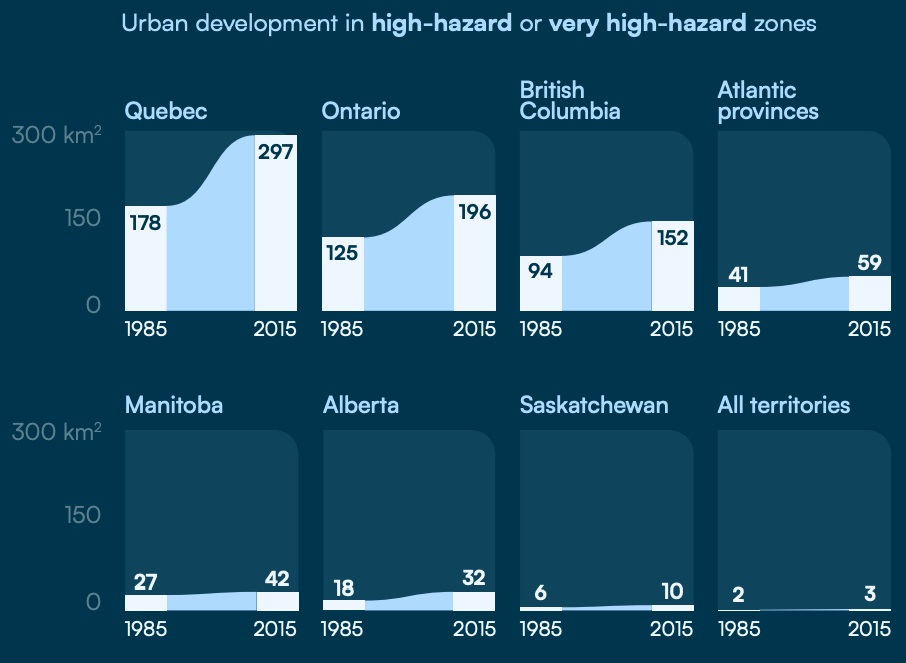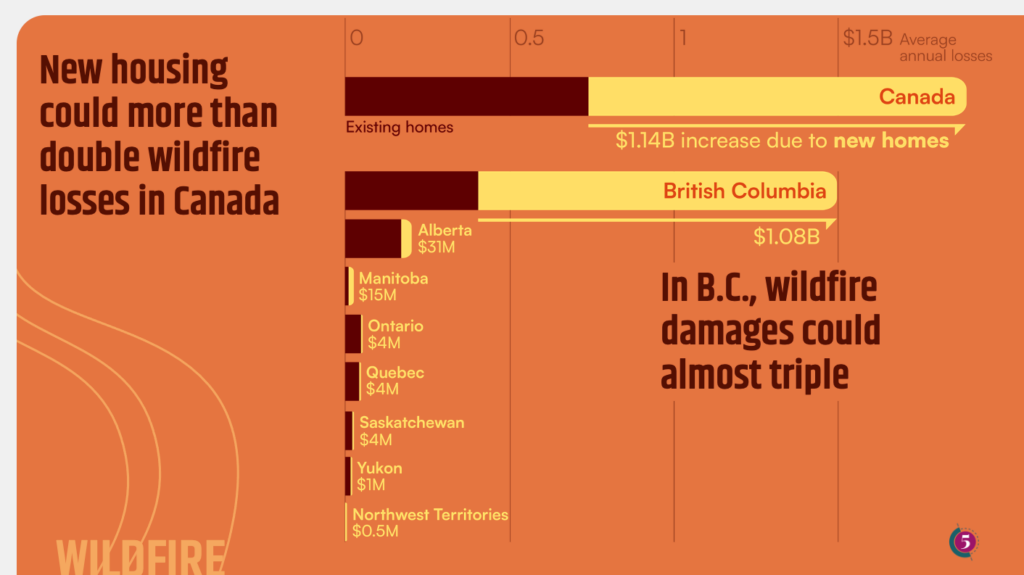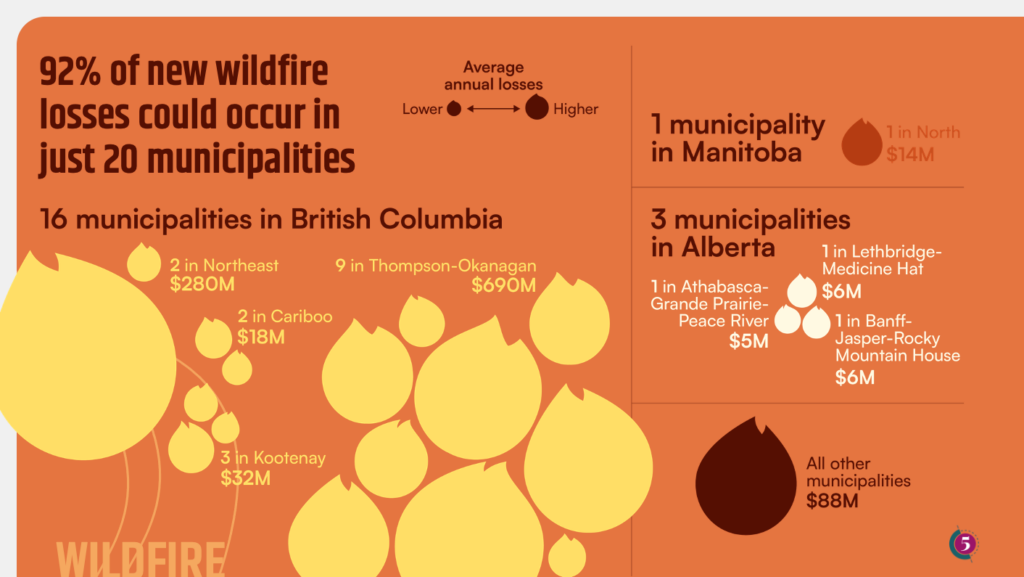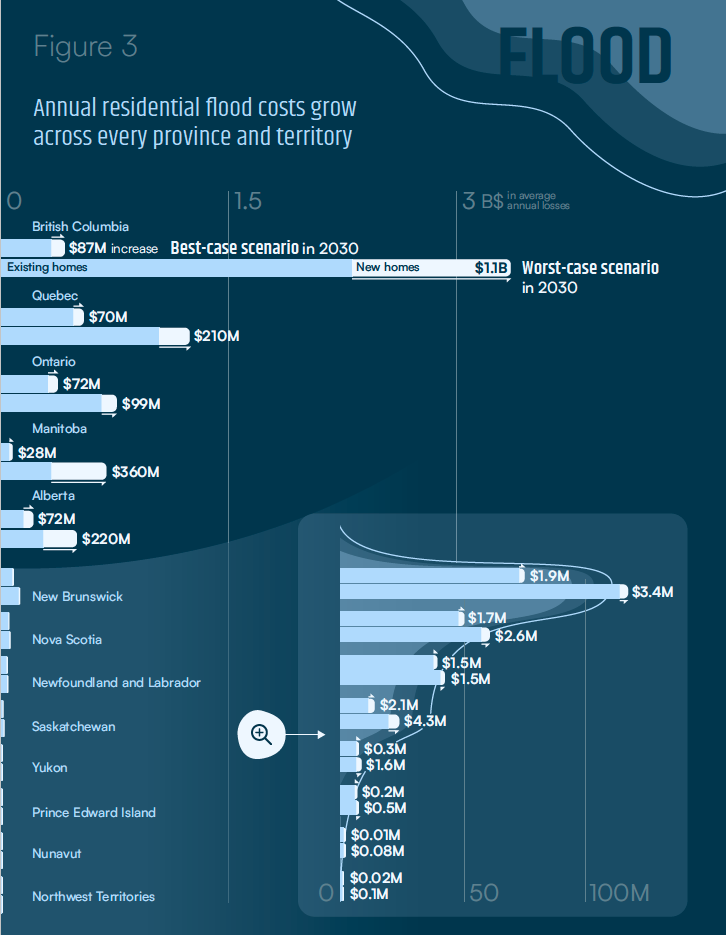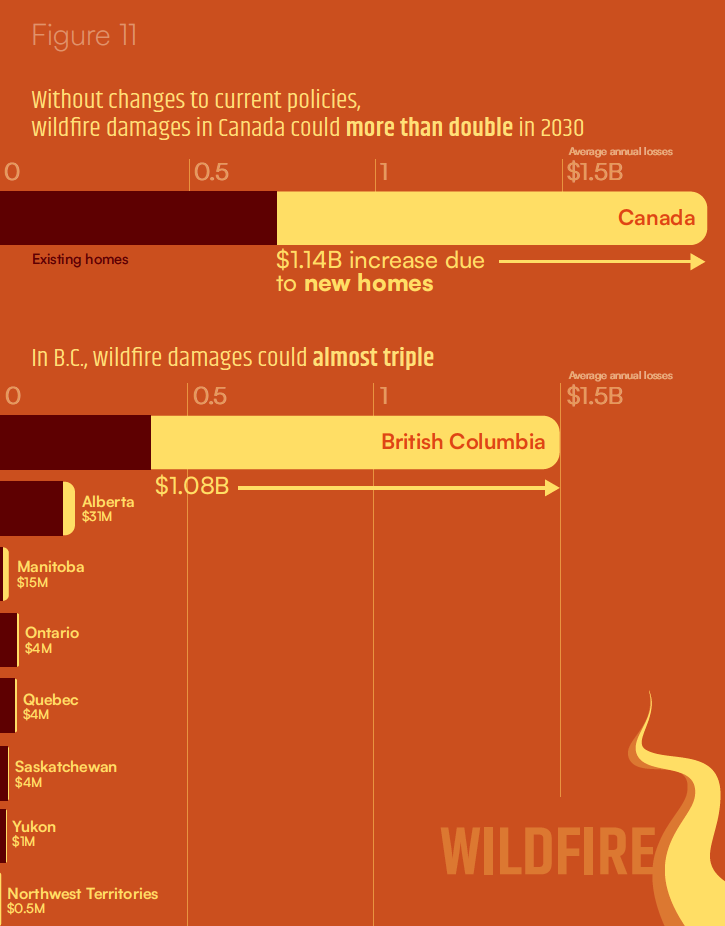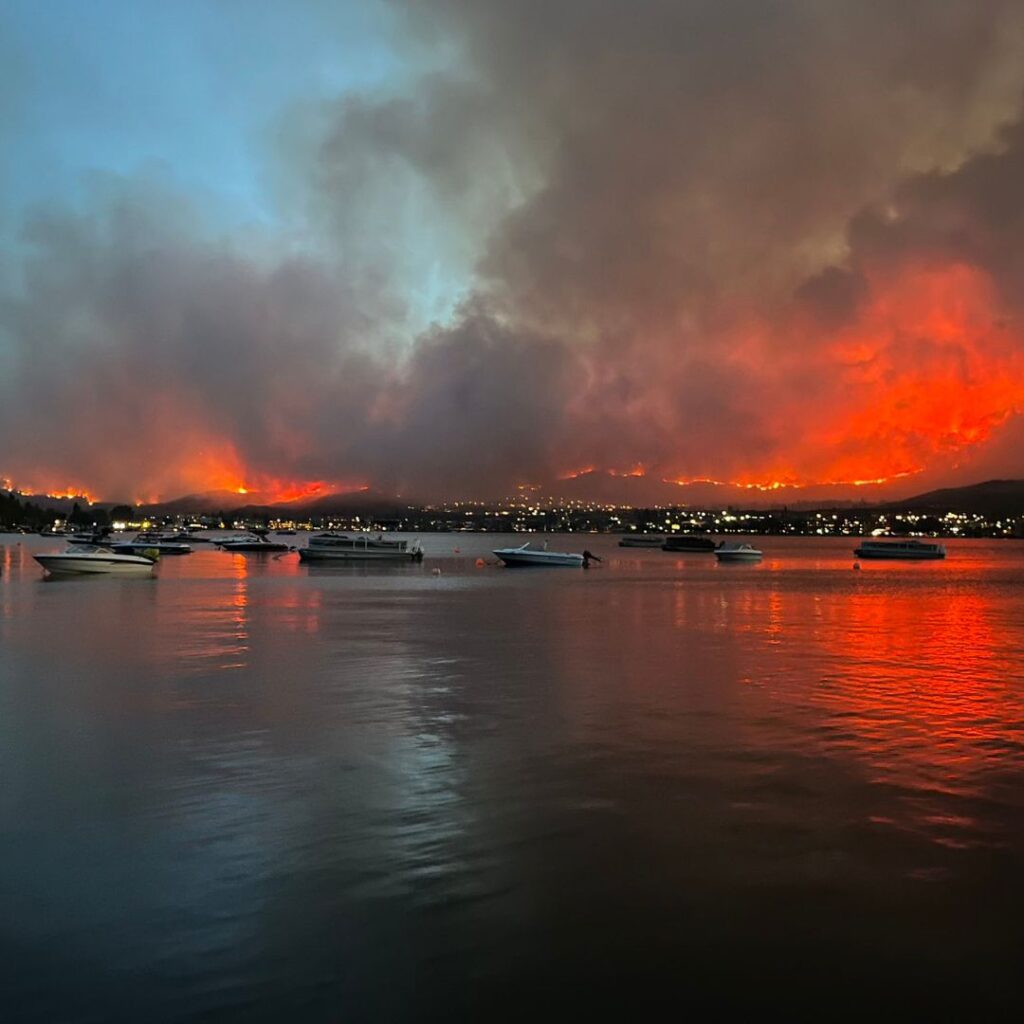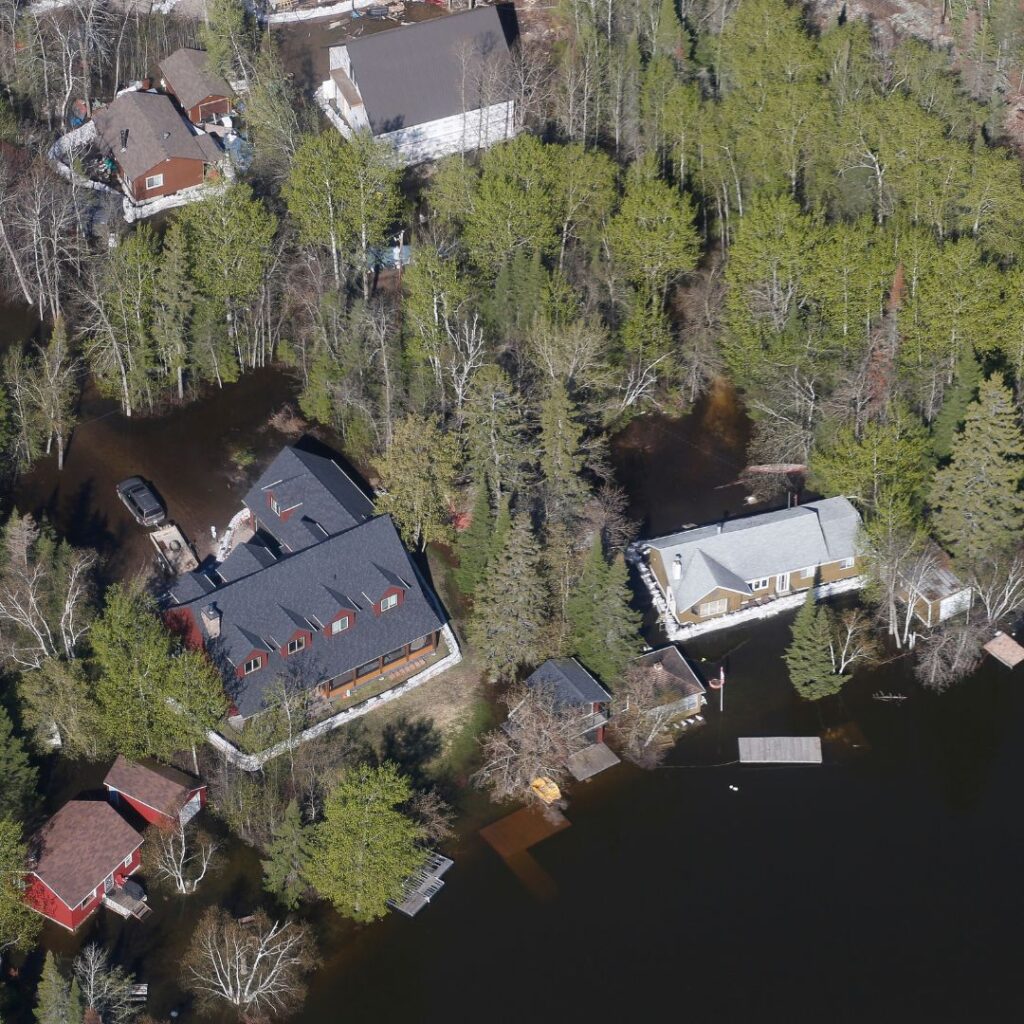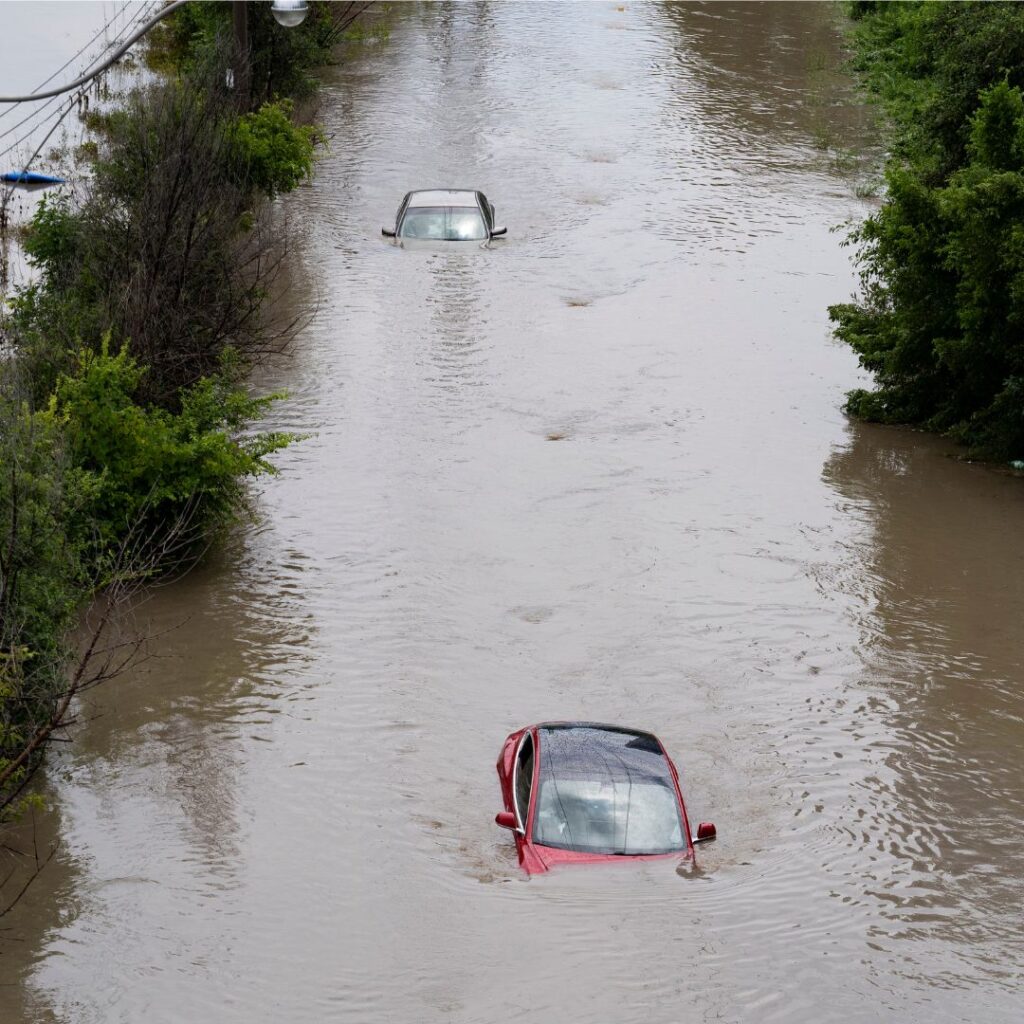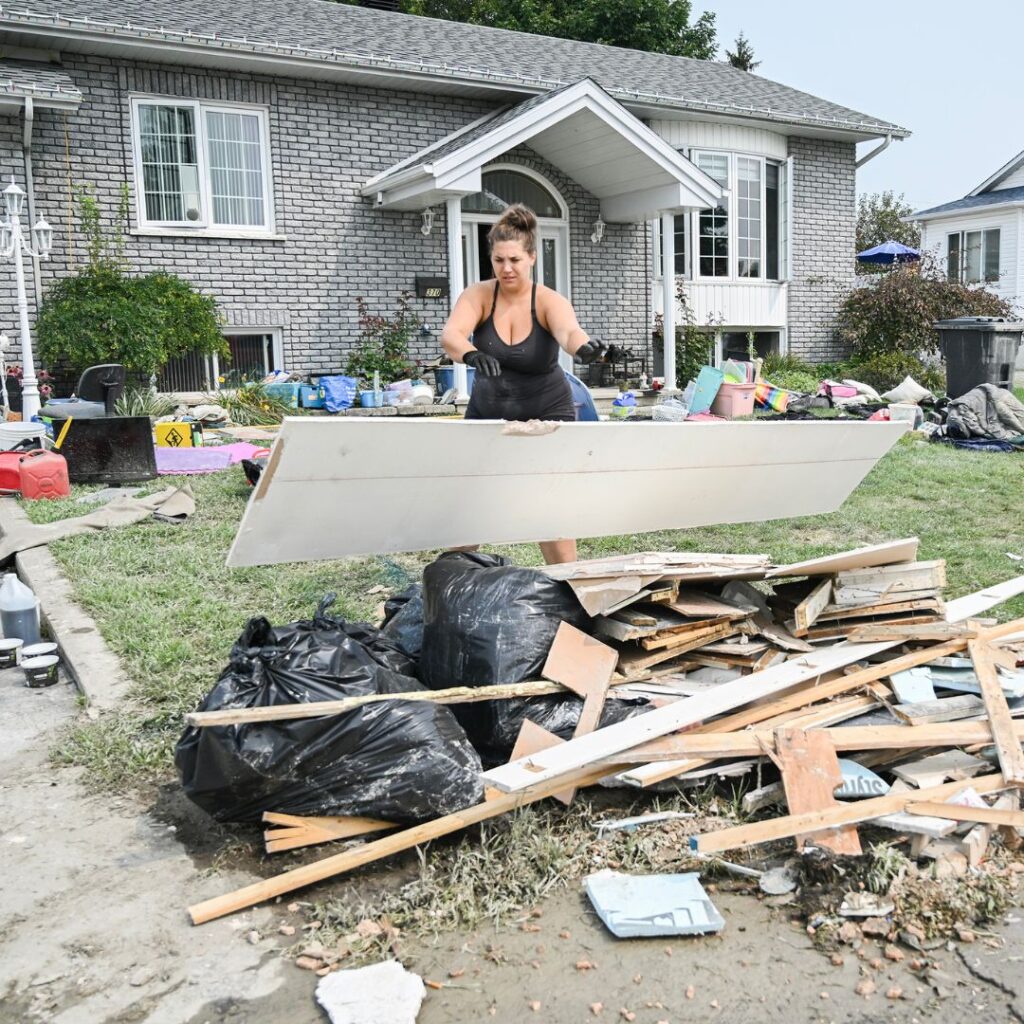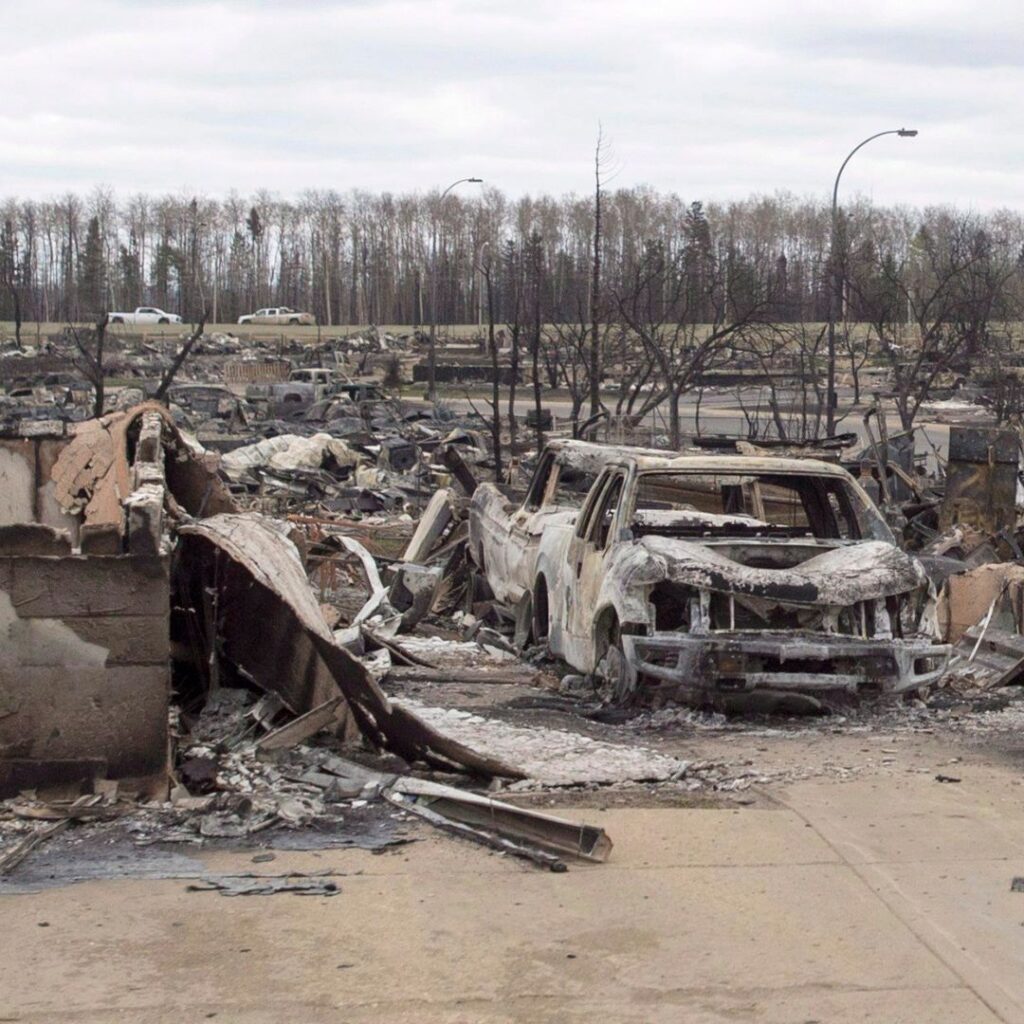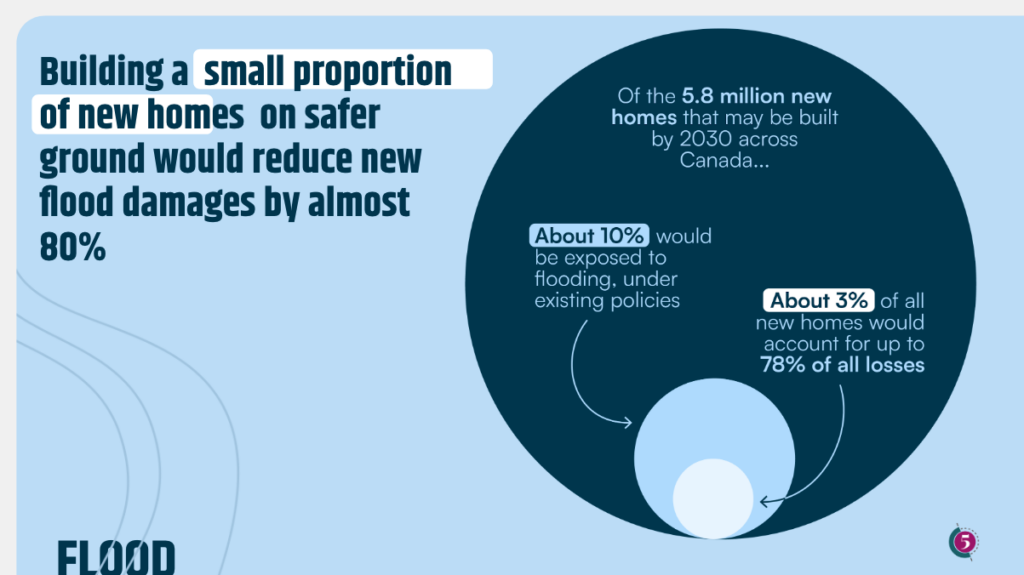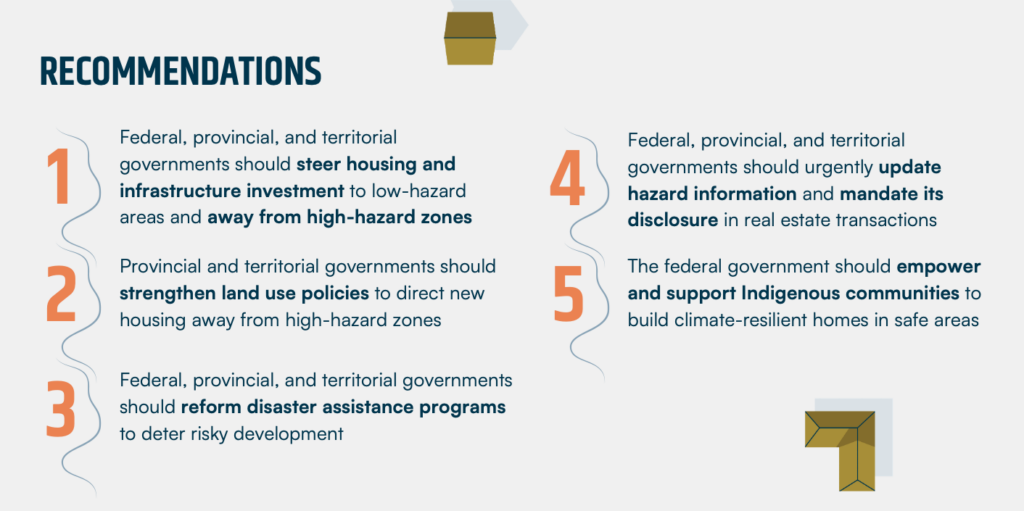
Close to home
How to build more housing in a changing climate
Building more housing in Canada will be critical to improving affordability. But ignoring the risks of more frequent and extreme wildfires and floods threatens to drive up costs for everyone.
The most affordable home is the one you don’t have to rebuild.
To meet housing affordability targets, an estimated 5.8 million homes need to be built by 2030—a 35 per cent increase to Canada’s existing housing stock.
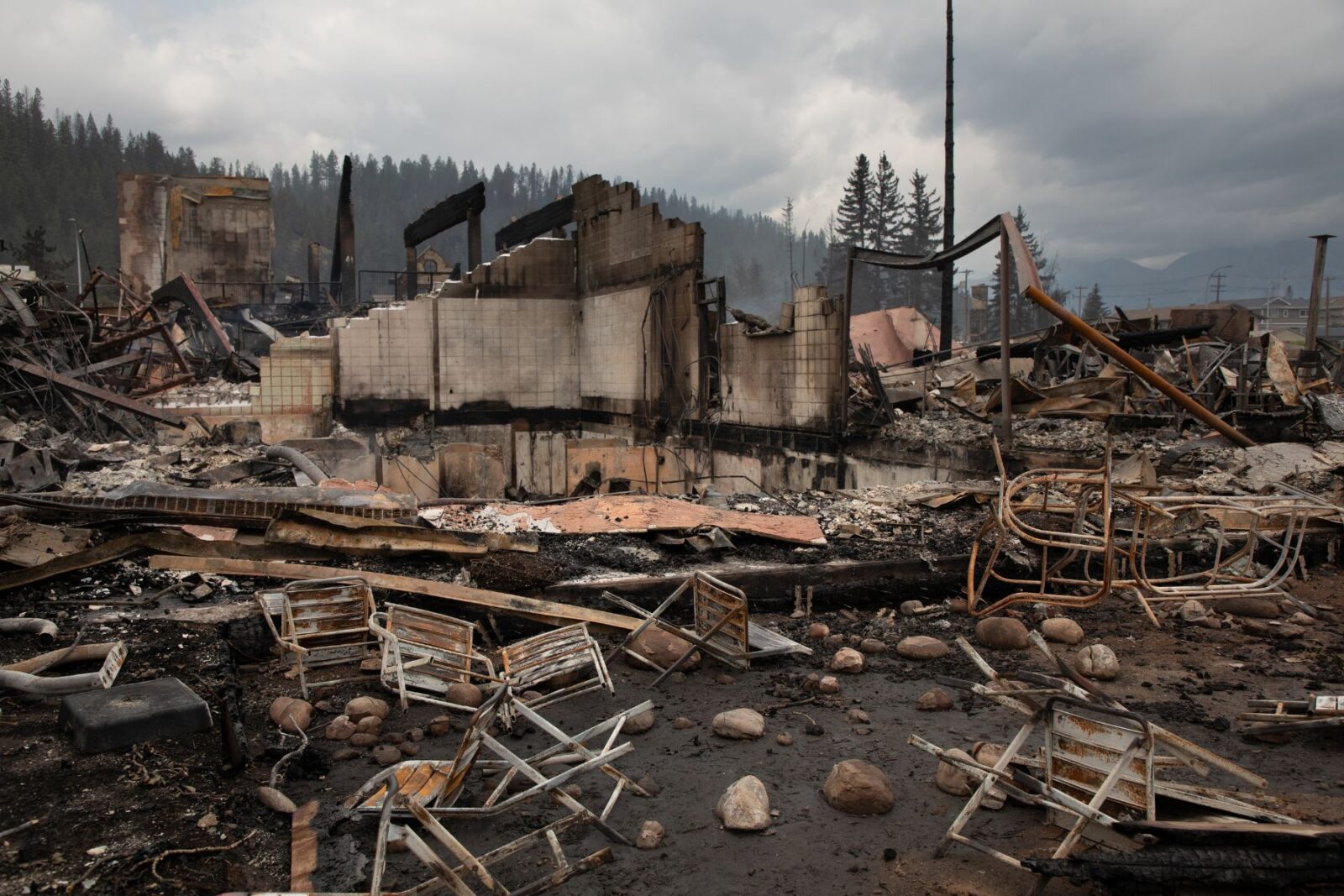
But if existing policies don’t change, hundreds of thousands of these new homes will be built in areas at risk from floods and wildfires, putting Canadians in harm’s way and costing billions of dollars every year.
By making policy changes that steer a small percentage of new homes to safer ground, governments can dramatically reduce flood and wildfire risk, prevent costs from soaring, and help improve affordability.
Our report, Close to Home: How to build more housing in a changing climate, shows how the country can meet its housing needs while keeping people safe in a changing climate. It’s the first of its kind in Canada to quantify the economic risks of building new homes in the paths of wildfires and floods. The report provides recommendations for building new homes away from the most dangerous wildfire and flood hazard zones, in the process saving Canada billions of dollars and helping shelter Canadians from disruptive disasters.
Scroll to explore our key findings and policy recommendations, or download the report.
Floods and wildfires are an increasingly costly threat
Floods and wildfire are the greatest climate threats to housing in Canada, yet new homes continue to be built in high-hazard zones. These and other extreme weather events made 2024 by far the costliest year in Canadian history, shattering records for insured damages.
While there’s no question new homes are needed across the country to improve affordability, accelerating development could worsen the problem unless governments improve policy to steer new housing toward safer ground.
Existing policies don’t protect new homes from rising flood risks
Our analysis finds that more than 540,000 homes could be built in areas of flood hazard by 2030, resulting in up to $2 billion every year in additional damages to housing in Canada from flooding alone.
The impacts of these new damages from flooding will vary across the country. The highest losses are estimated at $1,200 per year in additional costs for every new home added in Manitoba and the Yukon.
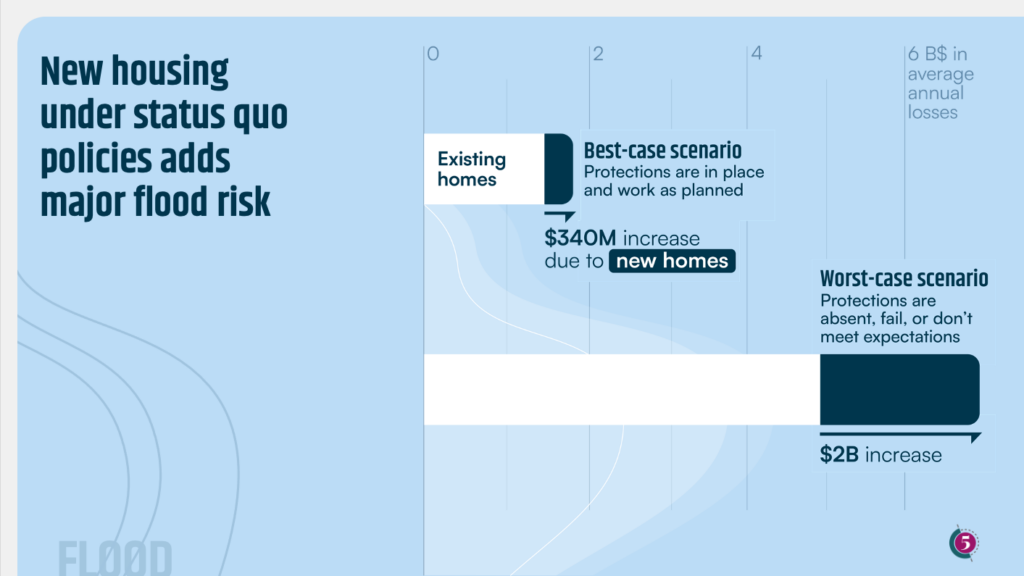
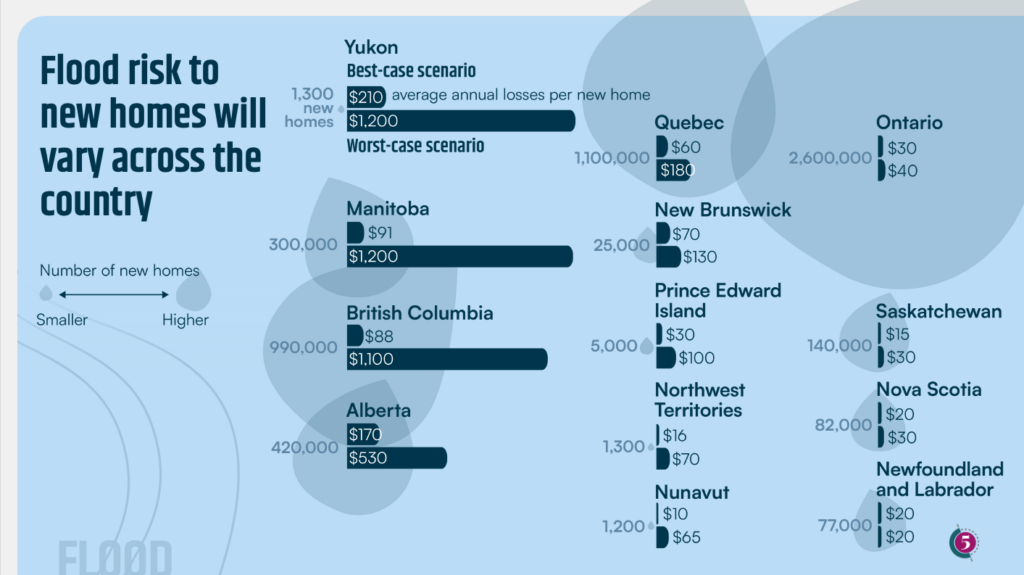
Wildfire losses could more than double by 2030
Wildfire impacts on new housing in Canada could more than double total national wildfire losses, with damages in B.C. almost tripling. Ninety-two per cent of new wildfire losses could occur in just 20 municipalities, the majority of which would be located in B.C.
New wildfire and flood damages could cost billions each year
The financial implications of building in flood and wildfire hazard zones are substantial, leading to combined damages to new housing in Canada as high as $3 billion per year.
In a best-case scenario, annual flood losses could increase by $330 million by 2030, with a worst-case scenario of up to $2 billion. Wildfire-related damages could add another $1.1 billion annually.
Costs will be unevenly distributed across the country
The highest costs from floods will be in major urban areas across Canada, while fire damages will be concentrated in the west.
British Columbia stands to build a disproportionate number of new homes in high-hazard areas, and is the site of most of Canada’s new wildfire- and flood-related financial losses. The financial risk from new housing in flood and wildfire hazard zones could surpass $2 billion per year in B.C., with some areas facing losses in the hundreds of millions annually.
Manitoba’s projected increases in damages to new housing are second only to British Columbia, at more than $375 million per year. Manitoba is one the of five provinces where the largest increases in total flood damages are projected to take place.
Ontario will see the largest numbers of new homes being built, including in high-risk areas, leading to increased flood and wildfire damages. However, Ontario’s stringent regulations have reduced flood risks for decades, and will keep per-home losses among the lowest in the country. Continuing to build on this foundation could reduce future risk.
Quebec is one the of four provinces where we project the largest increases in total flood damages will take place, adding up to $210 million per year in damages. The province has also made progress addressing these risks with policies for both riverine and coastal flooding and measures to restrict disaster assistance for new developments in hazard-prone areas.
Alberta will confront substantial increases in wildfire and flood risk to new housing in the years ahead. Without policy changes, these damages could increase by up to $250 million every year.
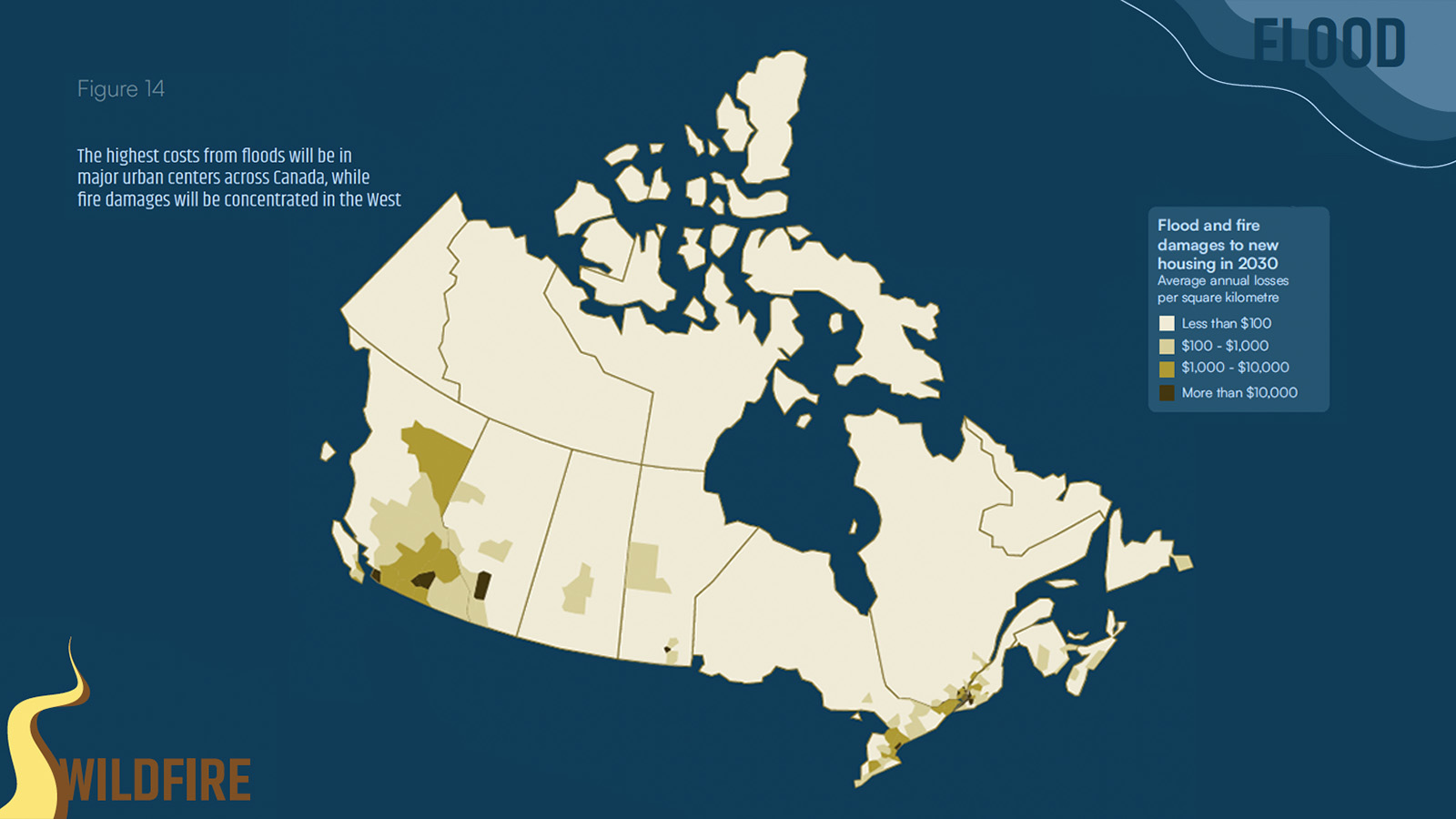
Permissive land use policies drive dangerous housing construction
In most provinces and territories, gaps in land use policies allow housing to be built in high-hazard flood and wildfire zones. When land use policies are permissive, other policy gaps, combined with pressure to build new homes as quickly as possible and a lack of information, drive unsafe housing development that costs billions and puts Canadians in harm’s way.
Unless policies are strengthened, Canada’s housing boom will increase the cost of living for homeowners and renters living in hazardous areas who will face frequent damage and costly repairs. And all Canadians will pay through ever-rising insurance premiums and tax-funded government disaster recovery efforts, even if they live outside the highest-hazard areas.
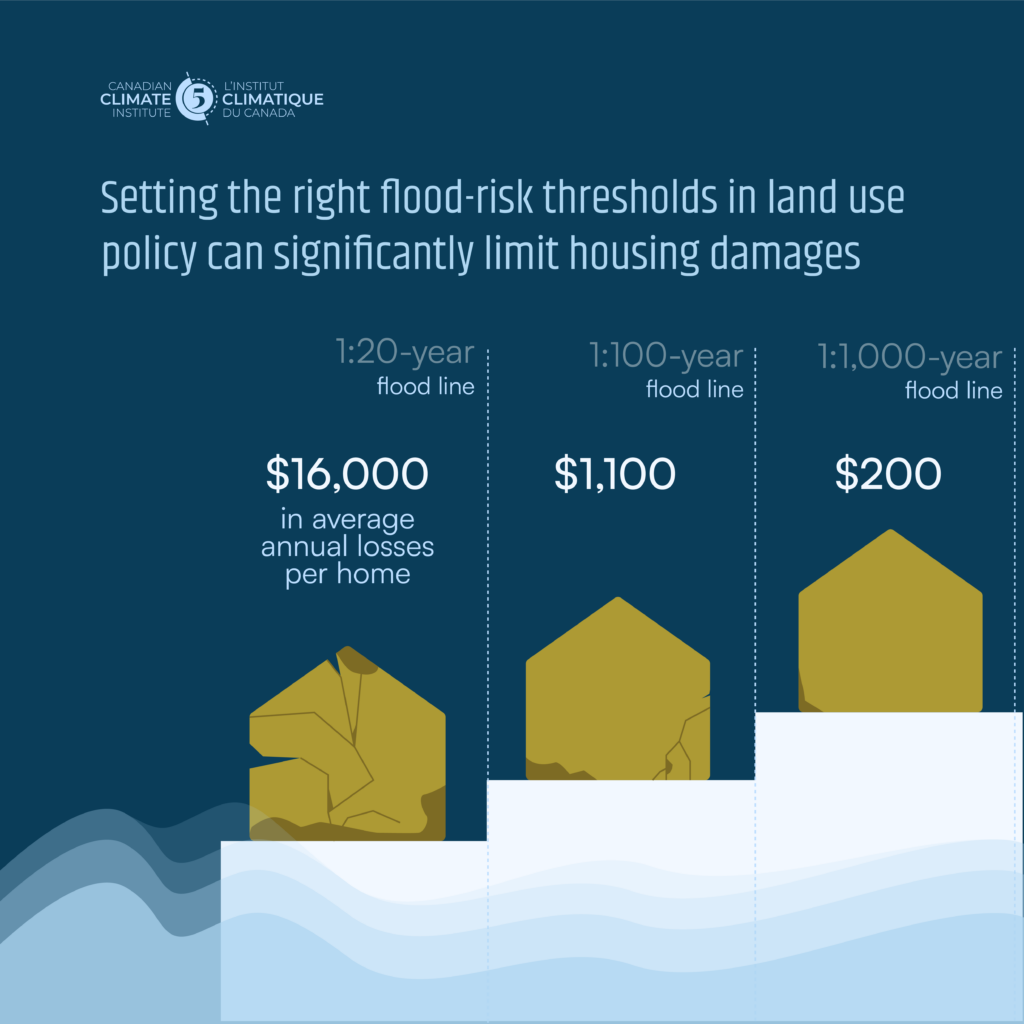
Indigenous communities face greater barriers to climate-resilient homes
We commissioned a companion report, Indigenous Housing and Climate Resilience by Shared Value Solutions, to assess issues specific to developing more climate-resilient homes on First Nations reserves.
Obstacles to minimizing flood and fire risk to new homes in Indigenous communities include infrastructure challenges, acute housing needs, and impacts from flooding, wildfire, extreme heat, and thawing permafrost. Additional barriers include capacity challenges, restricted decision-making autonomy, limited access to land, inadequate information-sharing, and funding constraints. Policies and practices that are having success include training programs, cultural burns, and merging Western science and Indigenous traditional knowledge. To learn more, download the detailed companion report.
Small changes have huge benefits
Building away from high-hazard zones can help shelter people’s homes from the life-changing disruption disasters cause, and will reduce costs for all Canadians, without limiting housing growth.
For example, redirecting about three per cent of the homes targeted for construction by 2030 away from high flood hazard areas and towards safer ground could dramatically reduce Canada’s flood risk to new housing, by almost 80 per cent.
Our wildfire analysis projects that 92 per cent of potential new wildfire-related financial losses will be concentrated in just 20 municipalities—most of which are in just three regions of British Columbia. Better choices about how and where to build new homes in these areas could significantly reduce new losses.
Recommendations
The high economic and human costs of building new homes in the wrong places can be avoided if governments act now. Federal, provincial, and territorial governments can make five policy changes to accelerate housing development that helps to reduce costs and keep new homes safer from wildfires and floods.
Related publications
Download ‘Close to Home’
Blogs
Location, location, location
Building much-needed homes on safer ground could save Canada billions of dollars
B.C. risks billions
if new homes are built in the path of fires and floods
From L.A. to Jasper
How Canada can be better prepared for wildfires
High and dry
The rising tide of flood risks and the insurance dilemma
Higher ground
Keeping new homes out of harm’s way
Technical reports
STAY CONNECTED
Don’t miss the latest from the Canadian Climate Institute.
Sign up to receive future research from the Canadian Climate Institute, as well as timely policy analysis, blogs, and event invitations.
Support our work by donating to the Institute.
1 The Osoyoos fire is seen burning across the lake in Osoyoos, B.C., in a Saturday, July 29, 2023. THE CANADIAN PRESS/HO-Walter Wells
2 High water levels are washing out highway 307 and leading to several hundred residents being evacuated from the area just north east of Winnipeg, Tuesday, May 24, 2022. THE CANADIAN PRESS/John Woods
3 Cars are partially submerged in flood waters in the Don Valley following heavy rain in Toronto, on Tuesday, July 16 2024. THE CANADIAN PRESS/Arlyn McAdorey
4 A woman dumps drywall damaged by flood waters next to a house in Louiseville, Que., Thursday, August 15, 2024, following a storm that dumped up to 175 millimetres of rain across the province. THE CANADIAN PRESS/Graham Hughes
5 Damage from the wildfires is seen in the Beacon Hill neighbourhood in Fort McMurray, Alta., on Monday, May 9, 2016. THE CANADIAN PRESS/Ryan Remiorz

